Recently saw this article on KDnuggets (check them out if you aren’t already subscribed) and thought it was worth using to update some of my slides about the current talent shortage for Data Science & Analytics (DSA) skills.
This shortage is definitely acute here in the Philippines.
- LinkedIn Workforce Report for US (August 2018) says “Demand for data scientists is off the charts … data science skills shortages are present in almost every large U.S. city. Nationally, we have a shortage of 151,717 people with data science skills.
- Note that LinkedIn reports shortages for people with “Data Science Skills”, not necessarily people with “Data Scientist” title.
- We can estimate the demand for “Data Scientists” from two popular job search sites – indeed and Glassdoor.
- Search on indeed.com for “data scientist” (in quotes) in USA finds only about 4,800 jobs. However, in a search for data scientist without quotes, about 30,000 jobs.
- UK: 1,100 jobs
- Germany: 900 jobs
- France: 718 jobs
- Philippines: 599 jobs — You Read That Right! More than India.
- India: 500 jobs

Google search defines a data scientist as “a person employed to analyze and interpret complex digital data, such as the usage statistics of a website, especially in order to assist a business in its decision-making.”
There are many people in the industry and academia who do this work without having the formal title of a data scientist, since Data Science is an interdisciplinary field at the intersection of Statistics, Computer Science, Machine Learning, and Business. We can estimate the current population of Data Scientist by examining popular data science platforms.
Kaggle (now part of Google) is a platform for data science and analytics competitions. It claims to be the world’s largest community of active data scientists.
While not all Data Scientists take part in Kaggle competitions or have a Kaggle account, and not all Kagglersdo work of data science, it is reasonable to assume a large overlap.
On Sep 19, 2018 Kaggle says they surpassed 2 million members in August 2018.
Since not all Kaggle members are active, Kaggle membership is probably a global upper bound for people engaged in data science.
KDnuggets is now reaching over 500,000 unique visitors per month.
KDnuggets now has about 240,000 subscribers/followers over Twitter, LinkedIn, Facebook, RSS, and email.
On LinkedIn, there are many groups dedicated to data science, and although the engagement in those groups has been falling, we can use their membership as a rough estimate. Here are three of the largest groups
- Big Data and Analytics – 339,000
- Data Science Central – 278,000
- Data Mining, Statistics, Big Data, Data Visualization, and Data Science – 170,000
Searching LinkedIn for “data scientist” (quotes are important) we find over 100,000 people with that actual title. So if globally between 200,000 and 1,000,000 people are doing some Data Science related work, then a majority of them does not have a Data Scientist title.
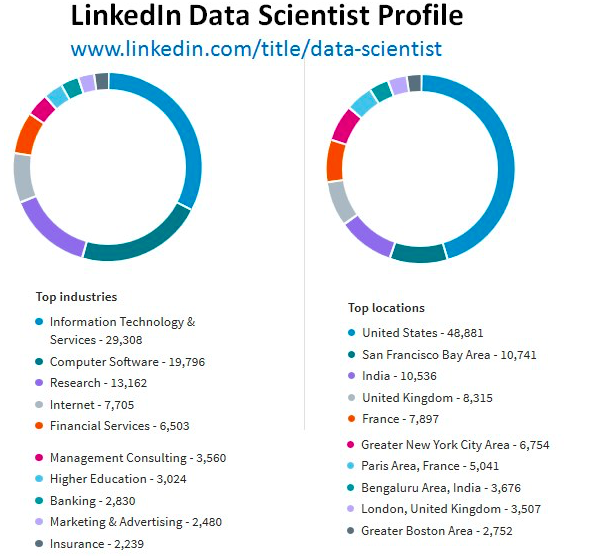
We can also estimate the by looking at activities related to languages and platforms most connected to Data Science: R, Python, Machine Learning libraries, Spark, and Jupyter.
- Apache Spark Meetups had 225K members recently and growing every month.
- Intel Capital estimated that there 1 million R programmers worldwide.
- Based on the public data on python.orgwebsite, there have been around 2.75 million downloads.
- Jupyterproject has around 3 million users at present.
These numbers can give us a rough upper limit on the number of data analysts/data scientists around the world.
So yeah, to answer the question, there are at least 200,000
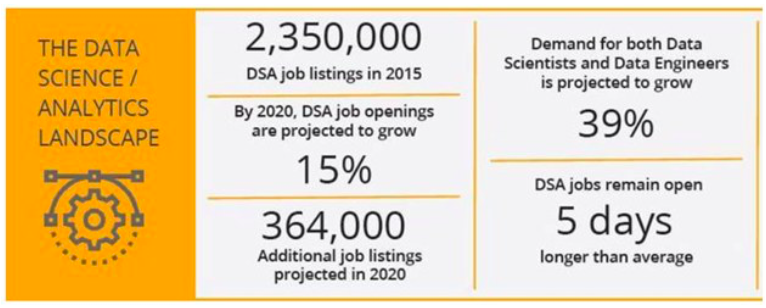
Question 3: What are the Future Prospects for Data Scientists?
The near-term future for Data Scientists looks bright.
LinkedIn 2017 emerging jobs report claims that machine learning engineers working today has increased by 9.8 times as compared to 5 years ago.
Machine Learning Engineers, Data Scientists, and Big Data Engineers rank among the top emerging jobs on LinkedIn. Data scientist roles have grown over 650% since 2012.
Job growth in the next decade is expected to outstrip growth during the previous decade, creating 11.5M jobs in the Data Science/Analytics area by 2026, according to the U.S. Bureau of Labor Statistics.
IBM recently claimed that by 2020 the number of Data Science and Analytics job listings is projected to grow by nearly 364,000 listings to approximately 2,720,000. No matter what the true number of data professionals out there currently, their number is likely to grow in the near future.
So What are the Future Prospects for Data Scientists in the Philippines?
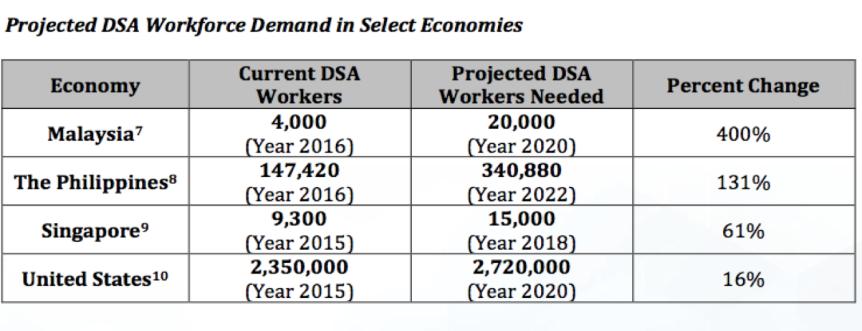
Based on Data from APEC (Asia Pacific Economic Cooperation), there is both a huge demand here in the Philippines as well as in the jobs where the Philippines already has an outsourcing pipeline too.
SO what does that mean for you?
You Need to Know Exactly What You Need to Hire/Learn how to have/be a Data Scientist?
And it’s not easy.

To assemble a team of DSA Practitioners, you need to make sure you have the right combination of talent.
Here is how I would start.
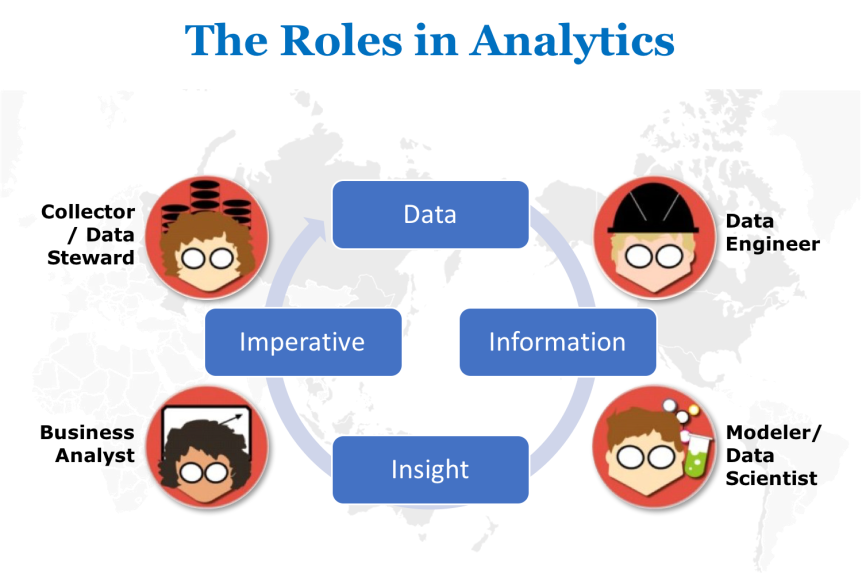
Make sure you have people who can do these functions.
And if you want to learn how to be one of these key players, I’m betting you need to know where to start.
So wether you want to be a DSA enabled professional or you want to assemble a DSA team, here is a better understanding of how that looks.

Yeah I know. It is a lot!
So, what now?
Connect with DMAIPH and we will get you started!
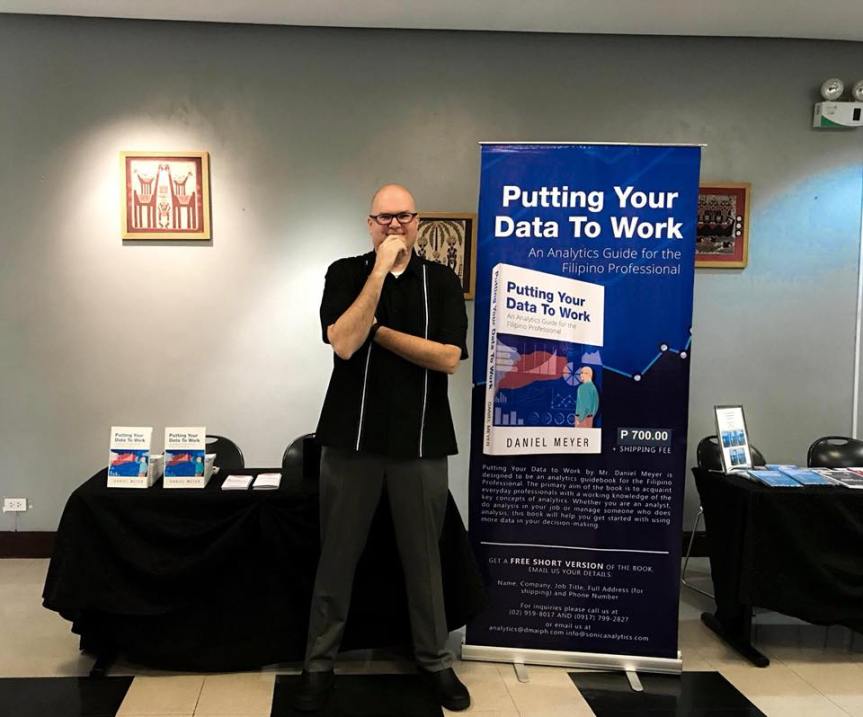
DMAIPH – Decision-making, Analytics & Intelligence Philppines
Over the past few years businesses in the Philippines have invested heavily in big data, analytics and data science, but still have not achieved the expected outcomes of data-driven companies.
Based on our learnings from the 100’s of Filipino businesses and 10,000s of Filipinos who have taken part in DMAIPH Analytics trainings all across the country, we have crafted a proven, non-technical approach to upskilling your team in analytics.
In 2019, we will be launching two new training programs: (1) Our DMAIPH Applied Analytics Master Class series for executives, leaders and decision-makers and our (2) DMAIPH Applied Analytics Boot Camp series for practicing analysts.
We will feature case studies of real Filipino run business, exercises based on actual analytics challenges being solved by Filipino analysts, and provide you with a copy of my book, Putting Your Data to Work, an analytics guidebook for the Filipino professional
Connect with us via our marketing partner, http://www.sonicanalytics.com to learn about upcoming analytics trainings and events.

